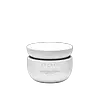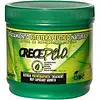What's inside
What's inside
 Key Ingredients
Key Ingredients

 Benefits
Benefits

 Concerns
Concerns

 Ingredients Side-by-side
Ingredients Side-by-side

Water
Skin ConditioningCetearyl Alcohol
EmollientPropanediol
SolventHydrogenated Ethylhexyl Olivate
EmollientButyrospermum Parkii Butter
Skin ConditioningBehentrimonium Chloride
PreservativeLactobacillus
Skin ConditioningAstrocaryum Murumuru Seed Butter
EmollientOlea Europaea Fruit Oil
MaskingSodium Hyaluronate
HumectantSqualane
EmollientAdansonia Digitata Seed Oil
EmollientArgania Spinosa Kernel Oil
EmollientBoswellia Carterii Resin Extract
MaskingHyssopus Officinalis Leaf Oil
Skin ConditioningMoringa Oleifera Seed Oil
EmollientNigella Sativa Seed Oil
EmollientOrbignya Speciosa Kernel Oil
EmollientCitrullus Lanatus Seed Oil
EmollientHydrogenated Olive Oil Unsaponifiables
EmollientHelianthus Annuus Seed Extract
Skin ConditioningC9-12 Alkane
SolventCetrimonium Chloride
AntimicrobialPolyquaternium-10
Stearalkonium Chloride
PreservativeCetyl Hydroxyethylcellulose
Emulsion StabilisingPhytic Acid
Caramel
Cosmetic ColorantCoco-Caprylate/Caprate
EmollientCitric Acid
BufferingParfum
MaskingPotassium Sorbate
PreservativePhenoxyethanol
PreservativeDipropylene Glycol
HumectantStearyl Alcohol
EmollientSilica Dimethyl Silylate
EmollientHydrated Silica
AbrasiveSodium Phosphate
BufferingDisodium Phosphate
BufferingTocopherol
AntioxidantLinalool
PerfumingWater, Cetearyl Alcohol, Propanediol, Hydrogenated Ethylhexyl Olivate, Butyrospermum Parkii Butter, Behentrimonium Chloride, Lactobacillus, Astrocaryum Murumuru Seed Butter, Olea Europaea Fruit Oil, Sodium Hyaluronate, Squalane, Adansonia Digitata Seed Oil, Argania Spinosa Kernel Oil, Boswellia Carterii Resin Extract, Hyssopus Officinalis Leaf Oil, Moringa Oleifera Seed Oil, Nigella Sativa Seed Oil, Orbignya Speciosa Kernel Oil, Citrullus Lanatus Seed Oil, Hydrogenated Olive Oil Unsaponifiables, Helianthus Annuus Seed Extract, C9-12 Alkane, Cetrimonium Chloride, Polyquaternium-10, Stearalkonium Chloride, Cetyl Hydroxyethylcellulose, Phytic Acid, Caramel, Coco-Caprylate/Caprate, Citric Acid, Parfum, Potassium Sorbate, Phenoxyethanol, Dipropylene Glycol, Stearyl Alcohol, Silica Dimethyl Silylate, Hydrated Silica, Sodium Phosphate, Disodium Phosphate, Tocopherol, Linalool
Water
Skin ConditioningCetyl Alcohol
EmollientStearyl Alcohol
EmollientCetrimonium Chloride
AntimicrobialBehentrimonium Methosulfate
Isopropyl Myristate
EmollientPropylene Glycol
HumectantPEG-12 Dimethicone
Skin ConditioningHydrolyzed Silk
HumectantParfum
MaskingPanthenol
Skin ConditioningGlycerin
HumectantPolyquaternium-11
Quaternium-80
DMDM Hydantoin
PreservativeDisodium EDTA
Citric Acid
BufferingLaureth-6
EmulsifyingUrtica Dioica
Arnica Montana Flower
Skin ConditioningBarosma Betulina Root Extract
Skin ConditioningCalendula Officinalis Flower Extract
MaskingPanax Ginseng Root Water
MaskingChamomilla Recutita Oil
MaskingCitrus Limon Fruit Extract
MaskingPinus Pinaster Bark Extract
AntioxidantSalvianolic Acid B
Skin ConditioningTioxolone
AstringentMilk
Skin ConditioningHydrolyzed Wheat Germ Extract
AntioxidantWater, Cetyl Alcohol, Stearyl Alcohol, Cetrimonium Chloride, Behentrimonium Methosulfate, Isopropyl Myristate, Propylene Glycol, PEG-12 Dimethicone, Hydrolyzed Silk, Parfum, Panthenol, Glycerin, Polyquaternium-11, Quaternium-80, DMDM Hydantoin, Disodium EDTA, Citric Acid, Laureth-6, Urtica Dioica, Arnica Montana Flower, Barosma Betulina Root Extract, Calendula Officinalis Flower Extract, Panax Ginseng Root Water, Chamomilla Recutita Oil, Citrus Limon Fruit Extract, Pinus Pinaster Bark Extract, Salvianolic Acid B, Tioxolone, Milk, Hydrolyzed Wheat Germ Extract
Ingredients Explained
These ingredients are found in both products.
Ingredients higher up in an ingredient list are typically present in a larger amount.
This ingredient is a preservative, antimicrobial, and emulsifier. It is often used in cosmetics for its ability to cleanse, condition, and reduce static.
Cetrimonium chloride is a quaternary ammonium salt, meaning it has a water-soluble structure.
Citric Acid is an alpha hydroxy acid (AHA) naturally found in citrus fruits like oranges, lemons, and limes.
Like other AHAs, citric acid can exfoliate skin by breaking down the bonds that hold dead skin cells together. This helps reveal smoother and brighter skin underneath.
However, this exfoliating effect only happens at high concentrations (20%) which can be hard to find in cosmetic products.
Due to this, citric acid is usually included in small amounts as a pH adjuster. This helps keep products slightly more acidic and compatible with skin's natural pH.
In skincare formulas, citric acid can:
While it can provide some skin benefits, research shows lactic acid and glycolic acid are generally more effective and less irritating exfoliants.
Most citric acid used in skincare today is made by fermenting sugars (usually from molasses). This synthetic version is identical to the natural citrus form but easier to stabilize and use in formulations.
Read more about some other popular AHA's here:
Learn more about Citric AcidParfum is a catch-all term for an ingredient or more that is used to give a scent to products.
Also called "fragrance", this ingredient can be a blend of hundreds of chemicals or plant oils. This means every product with "fragrance" or "parfum" in the ingredients list is a different mixture.
For instance, Habanolide is a proprietary trade name for a specific aroma chemical. When used as a fragrance ingredient in cosmetics, most aroma chemicals fall under the broad labeling category of “FRAGRANCE” or “PARFUM” according to EU and US regulations.
The term 'parfum' or 'fragrance' is not regulated in many countries. In many cases, it is up to the brand to define this term.
For instance, many brands choose to label themselves as "fragrance-free" because they are not using synthetic fragrances. However, their products may still contain ingredients such as essential oils that are considered a fragrance by INCI standards.
One example is Calendula flower extract. Calendula is an essential oil that still imparts a scent or 'fragrance'.
Depending on the blend, the ingredients in the mixture can cause allergies and sensitivities on the skin. Some ingredients that are known EU allergens include linalool and citronellol.
Parfum can also be used to mask or cover an unpleasant scent.
The bottom line is: not all fragrances/parfum/ingredients are created equally. If you are worried about fragrances, we recommend taking a closer look at an ingredient. And of course, we always recommend speaking with a professional.
Learn more about ParfumStearyl Alcohol is a type of fatty alcohol from stearic acid. It is a white, waxy compound used to emulsify ingredients.
Fatty Alcohols are most often used as an emollient or to thicken a product. Emollients help soothe and hydrate the skin by trapping moisture.
They are usually derived from natural fats and oils and therefore do not have the same drying or irritating effect as solvent alcohols. FDA allows products labeled "alcohol-free" to have fatty alcohols.
Learn more about Stearyl AlcoholWater. It's the most common cosmetic ingredient of all. You'll usually see it at the top of ingredient lists, meaning that it makes up the largest part of the product.
So why is it so popular? Water most often acts as a solvent - this means that it helps dissolve other ingredients into the formulation.
You'll also recognize water as that liquid we all need to stay alive. If you see this, drink a glass of water. Stay hydrated!
Learn more about Water